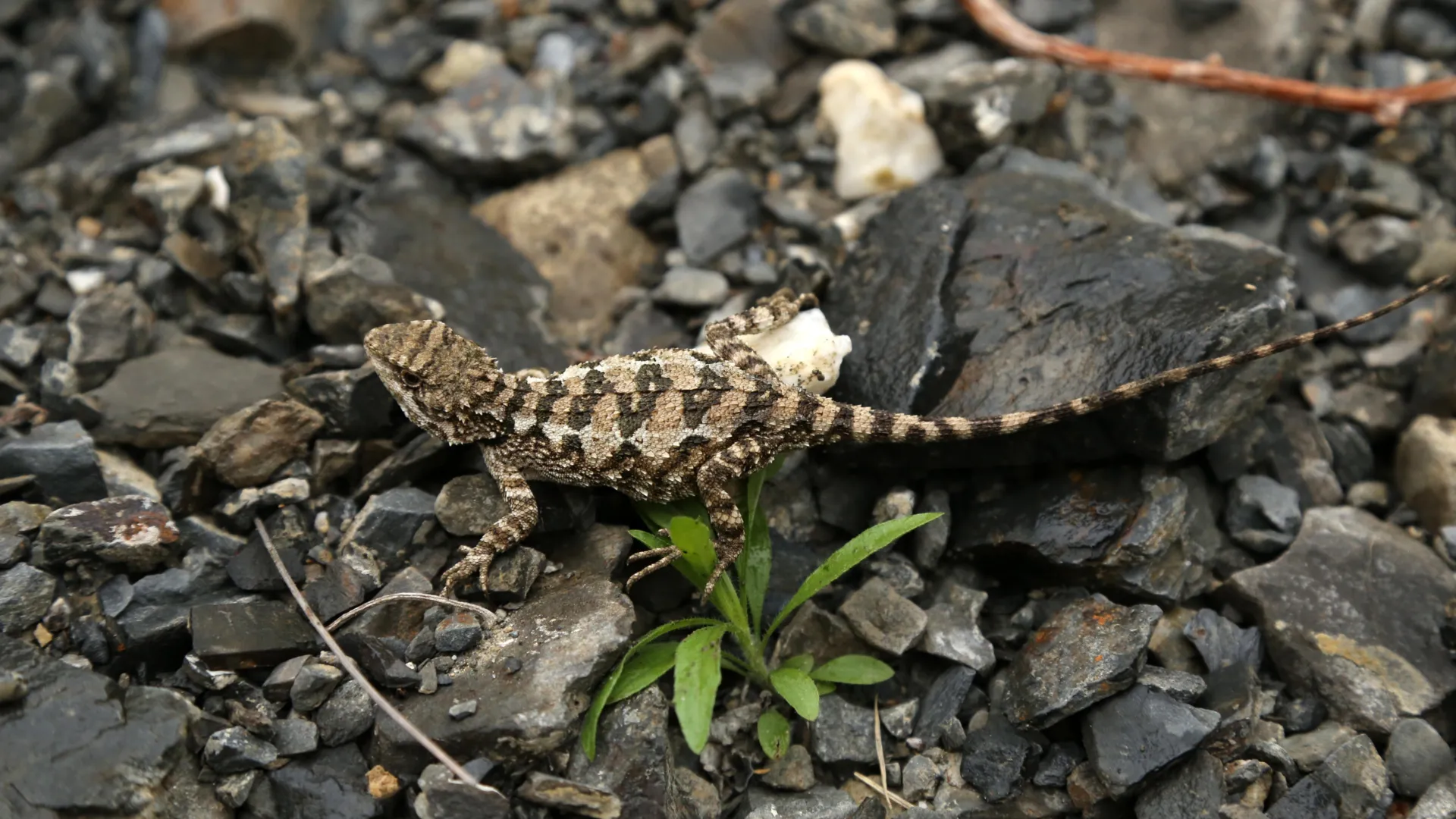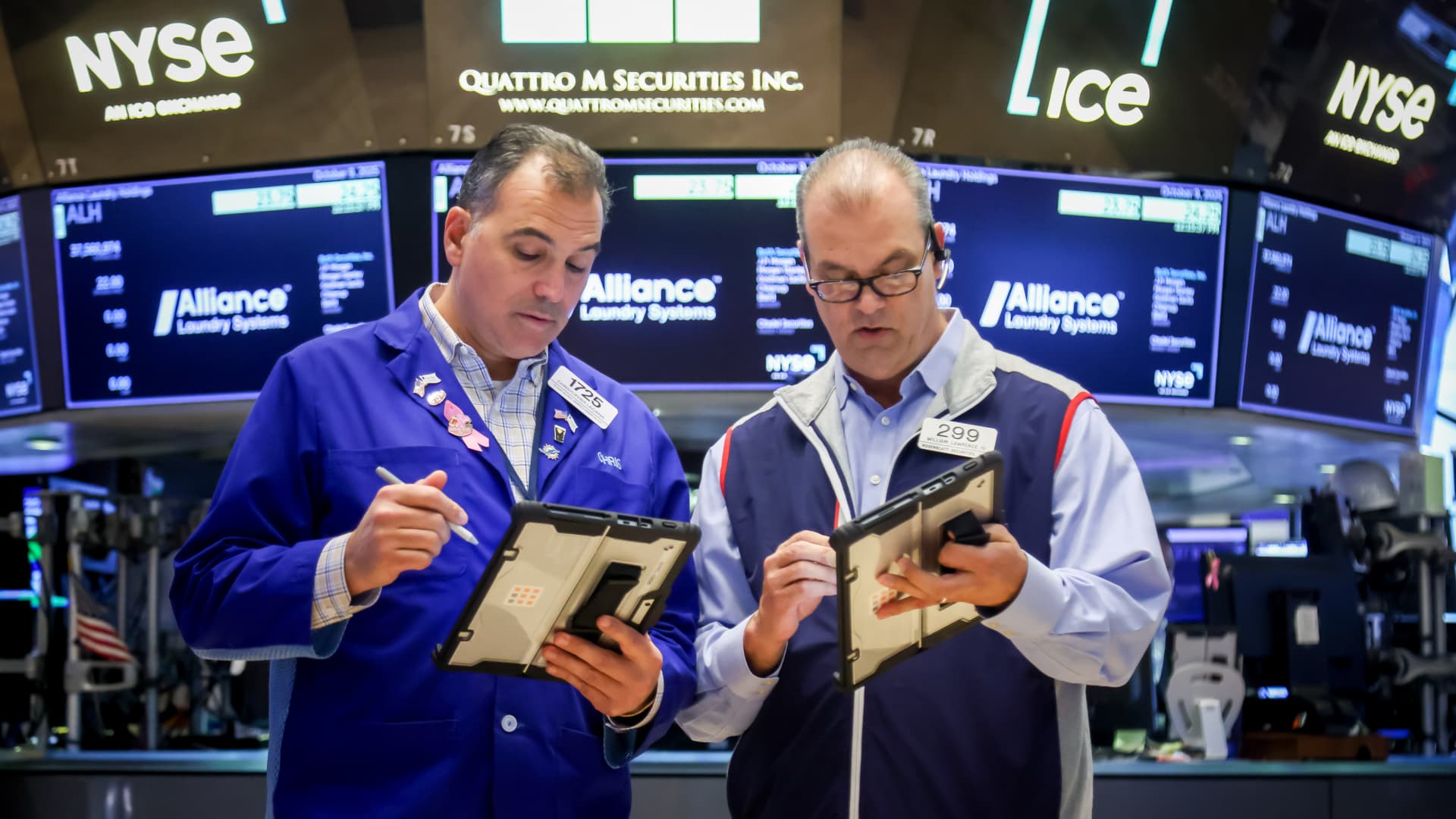Researchers in China have identified a previously unknown species of mountain lizard living in the upper Dadu River Valley, deep within the Hengduan Mountains of Sichuan Province.
Years of Field Surveys Lead to a Surprise
Starting in 2018, the…

Researchers in China have identified a previously unknown species of mountain lizard living in the upper Dadu River Valley, deep within the Hengduan Mountains of Sichuan Province.
Years of Field Surveys Lead to a Surprise
Starting in 2018, the…


Researchers in China have identified a previously unknown species of mountain lizard living in the upper Dadu River Valley, deep within the Hengduan Mountains of Sichuan Province.
Years of Field Surveys Lead to a Surprise
Starting in 2018, the…

U.S. Treasury yields inched higher on Thursday as investors digested the Federal Reserve’s latest interest rate cuts and uncertainty regarding future monetary policy.
At 6:22 a.m. ET, the benchmark 10-year Treasury yield was up less than 1 basis point to 4.066%. The 2-year Treasury note yield was also up less than a basis point to 3.59%. Meanwhile, the 30-year bond yield added 2 basis points to 4.624%.
One basis point equals 0.01% and yields and prices move in opposite directions.
Investors are weighing the Fed’s latest interest rate cut, which was widely expected and the second time policymakers cut rates this year.
In a 10-2 vote, the central bank’s Federal Open Market Committee lowered its benchmark overnight borrowing rate to a range of 3.75%-4%. The reduction came even as the Fed was flying blind on economic data due to the ongoing government shutdown.
In post-meeting statements, Fed Chairman Jerome Powell cast doubt on whether another rate cut is coming in the next meeting in December.
“In the committee’s discussions at this meeting, there were strongly differing views about how to proceed in December,” Powell said during his post-meeting news conference. “A further reduction in the policy rate at the December meeting is not a foregone conclusion. Far from it.”
Elsewhere, investors also kept an eye on President Donald Trump and Chinese President Xi Jinping’s meeting in South Korea to discuss trade, which concluded on Thursday on a positive note.
Garmin is a leading manufacturer of GPS-enabled devices and electronics used for general navigation, fitness tracking, avionics, marine recreation, and outdoor adventure. Garmin’s devices address many use cases, often focusing on real-time,…

Anthropic has expanded the availability of Claude Code, its AI-powered development environment, bringing it to the web and mobile platforms. Previously limited to desktop access through Claude.ai and API integrations, the new rollout…

In the middle of Egypt’s Western Desert, the sand hides stories that are millions of years old. Recently, scientists uncovered one of those stories near Kharga Oasis.
Among layers of red sandstone and green shale, a fossil appeared that rewrites…

When filmmaker and choreographer Farah Khan visited Jackie Shroff’s lush farmhouse near Pune, she didn’t just get a glimpse…

Virgin Media O2 has announced a “landmark” partnership with Elon Musk’s satellite company aimed at improving rural mobile network coverage.
The deal with Starlink Direct to Cell is said to be the first of its kind to utilise the billionaire’s company position as the world’s largest satellite-to-mobile constellation.
The service is scheduled to launch in the first half of 2026, making it the first British operator to use Starlink’s more than 650 satellites to connect to compatible customer handsets.
The new product, O2 Satellite, will allow customers to use messaging and data services in more rural areas. Initially, voice and video calls will not be available.
Lutz Schüler, the chief executive of Virgin Media O2, said: “This UK-first partnership is another example of Virgin Media O2 innovating to provide a better experience and peace of mind for our customers on top of the £700m we are already investing in our mobile network this year.
“Starlink is a clear leader in this space, operating the world’s most advanced satellite constellation, which makes it the right partner to complement our existing coverage and support Virgin Media O2’s ambition to deliver reliable mobile connectivity across the UK.”
The telecoms minister Liz Lloyd said: “This partnership demonstrates exactly how private sector innovation can deliver real benefits for people across the UK, supporting our mission to drive growth and ensure no community is left behind.
“Whether you’re running a farm in Cumbria or hiking in the Cairngorms, you’ll soon have the peace of mind that comes with reliable coverage.”
Earlier this year the Guardian reported that some subscribers had vented their frustrations over Musk’s political machinations. In the UK, Starlink is used mainly by people and businesses in rural areas who have poor broadband access, although there is also a minority of “preppers” and people who buy the tech as fans of Musk.
after newsletter promotion
PA Media contributed to this report

Pedestrians wear protective face masks while passing stores and cafes on Rue Montorgueil in Paris, France, on Wednesday, Aug. 26, 2020.
Bloomberg | Bloomberg | Getty Images
The euro zone economy eked out 0.2% growth in the third quarter, just beating expectations, according to flash data from Eurostat on Thursday.
Economists polled by Reuters had anticipated the bloc’s economy to expand by 0.1% between July and September.
The euro zone economy recorded 0.1% growth in the second quarter, following a 0.6% expansion in the first.
Growth in the single currency area was boosted by Spain and France, with the former reporting a 0.6% expansion in the third quarter and the latter registering 0.5% growth (significantly higher than analysts’ expectations for 0.2% growth) despite a backdrop of political instability.
Germany and Italy were drags on the growth rate, however, as both countries’ economies stalled.
The data — which indicates an unexpected economic resiliency — comes ahead of the European Central Bank’s next monetary policy decision, due later Thursday, and removes any immediate pressure on the central bank to cut rates to stimulate the economy.
The central bank is widely expected to keep its key deposit facility rate at 2% at the meeting, having last cut rates in June. The trim came as the euro zone’s annual inflation rate hit 2%, the ECB’s target, though the rate of price rises has risen since, to 2.2% in September.
Despite a lackluster growth outlook, economists say the central bank is unlikely to cut interest rates again for a while.
“The ECB’s rate cutting cycle appears to be over, at least for now, with firmer business activity and rising inflation leaving few doubts that the Governing Council will sit on its hands for a while yet,” Matthew Ryan, head of Market Strategy at financial services firm Ebury, said in emailed comments.